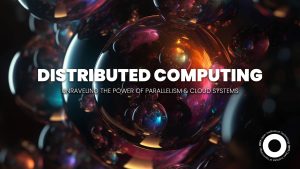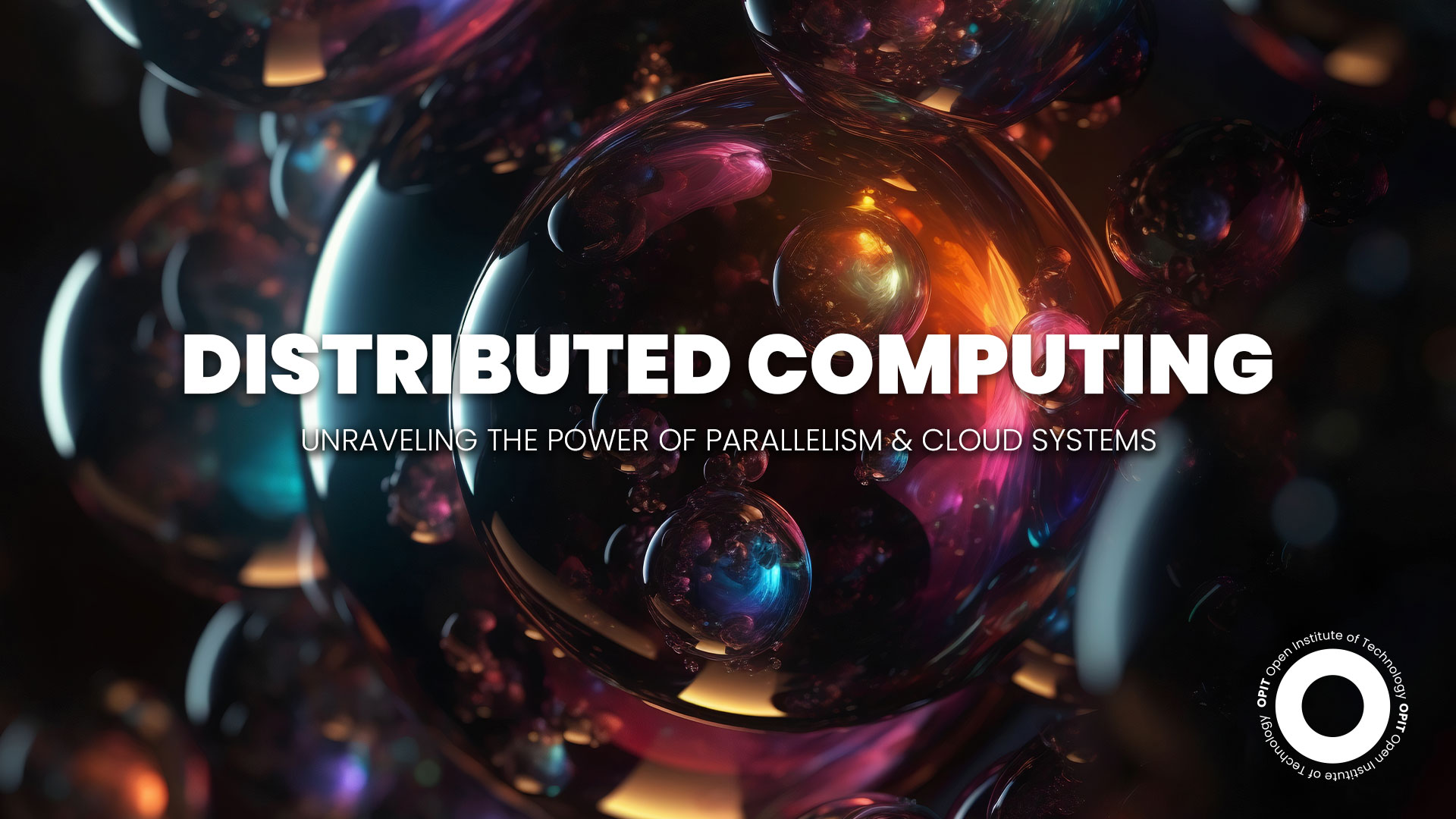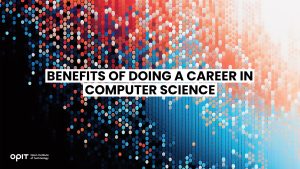

Did you know you’re participating in a distributed computing system simply by reading this article? That’s right, the massive network that is the internet is an example of distributed computing, as is every application that uses the world wide web.
Distributed computing involves getting multiple computing units to work together to solve a single problem or perform a single task. Distributing the workload across multiple interconnected units leads to the formation of a super-computer that has the resources to deal with virtually any challenge.
Without this approach, large-scale operations involving computers would be all but impossible. Sure, this has significant implications for scientific research and big data processing. But it also hits close to home for an average internet user. No distributed computing means no massively multiplayer online games, e-commerce websites, or social media networks.
With all this in mind, let’s look at this valuable system in more detail and discuss its advantages, disadvantages, and applications.
Basics of Distributed Computing
Distributed computing aims to make an entire computer network operate as a single unit. Read on to find out how this is possible.
Components of a Distributed System
A distributed system has three primary components: nodes, communication channels, and middleware.
Nodes
The entire premise of distributed computing is breaking down one giant task into several smaller subtasks. And who deals with these subtasks? The answer is nodes. Each node (independent computing unit within a network) gets a subtask.
Communication Channels
For nodes to work together, they must be able to communicate. That’s where communication channels come into play.
Middleware
Middleware is the middleman between the underlying infrastructure of a distributed computing system and its applications. Both sides benefit from it, as it facilitates their communication and coordination.
Types of Distributed Systems
Coordinating the essential components of a distributed computing system in different ways results in different distributed system types.
Client-Server Systems
A client-server system consists of two endpoints: clients and servers. Clients are there to make requests. Armed with all the necessary data, servers are the ones that respond to these requests.
The internet, as a whole, is a client-server system. If you’d like a more specific example, think of how streaming platforms (Netflix, Disney+, Max) operate.
Peer-to-Peer Systems
Peer-to-peer systems take a more democratic approach than their client-server counterparts: they allocate equal responsibilities to each unit in the network. So, no unit holds all the power and each unit can act as a server or a client.
Content sharing through clients like BitTorrent, file streaming through apps like Popcorn Time, and blockchain networks like Bitcoin are some well-known examples of peer-to-peer systems.
Grid Computing
Coordinate a grid of geographically distributed resources (computers, networks, servers, etc.) that work together to complete a common task, and you get grid computing.
Whether belonging to multiple organizations or far away from each other, nothing will stop these resources from acting as a uniform computing system.
Cloud Computing
In cloud computing, centralized data centers store data that organizations can access on demand. These centers might be centralized, but each has a different function. That’s where the distributed system in cloud computing comes into play.
Thanks to the role of distributed computing in cloud computing, there’s no limit to the number of resources that can be shared and accessed.
Key Concepts in Distributed Computing
For a distributed computing system to operate efficiently, it must have specific qualities.
Scalability
If workload growth is an option, scalability is a necessity. Amp up the demand in a distributed computing system, and it responds by adding more nodes and consuming more resources.
Fault Tolerance
In a distributed computing system, nodes must rely on each other to complete the task at hand. But what happens if there’s a faulty node? Will the entire system crash? Fortunately, it won’t, and it has fault tolerance to thank.
Instead of crashing, a distributed computing system responds to a faulty node by switching to its working copy and continuing to operate as if nothing happened.
Consistency
A distributed computing system will go through many ups and downs. But through them all, it must uphold consistency across all nodes. Without consistency, a unified and up-to-date system is simply not possible.
Concurrency
Concurrency refers to the ability of a distributed computing system to execute numerous processes simultaneously.
Parallel computing and distributed computing have this quality in common, leading many to mix up these two models. But there’s a key difference between parallel and distributed computing in this regard. With the former, multiple processors or cores of a single computing unit perform the simultaneous processes. As for distributed computing, it relies on interconnected nodes that only act as a single unit for the same task.
Despite their differences, both parallel and distributed computing systems have a common enemy to concurrency: deadlocks (blocking of two or more processes). When a deadlock occurs, concurrency goes out of the window.
Advantages of Distributed Computing
There are numerous reasons why using distributed computing is a good idea:
- Improved performance. Access to multiple resources means performing at peak capacity, regardless of the workload.
- Resource sharing. Sharing resources between several workstations is your one-way ticket to efficiently completing computation tasks.
- Increased reliability and availability. Unlike single-system computing, distributed computing has no single point of failure. This means welcoming reliability, consistency, and availability and bidding farewell to hardware vulnerabilities and software failures.
- Scalability and flexibility. When it comes to distributed computing, there’s no such thing as too much workload. The system will simply add new nodes and carry on. No centralized system can match this level of scalability and flexibility.
- Cost-effectiveness. Delegating a task to several lower-end computing units is much more cost-effective than purchasing a single high-end unit.
Challenges in Distributed Computing
Although this offers numerous advantages, it’s not always smooth sailing with distributed systems. All involved parties are still trying to address the following challenges:
- Network latency and bandwidth limitations. Not all distributed systems can handle a massive amount of data on time. Even the slightest delay (latency) can affect the system’s overall performance. The same goes for bandwidth limitations (the amount of data that can be transmitted simultaneously).
- Security and privacy concerns. While sharing resources has numerous benefits, it also has a significant flaw: data security. If a system as open as a distributed computing system doesn’t prioritize security and privacy, it will be plagued by data breaches and similar cybersecurity threats.
- Data consistency and synchronization. A distributed computing system derives all its power from its numerous nodes. But coordinating all these nodes (various hardware, software, and network configurations) is no easy task. That’s why issues with data consistency and synchronization (concurrency) come as no surprise.
- System complexity and management. The bigger the distributed computing system, the more challenging it gets to manage it efficiently. It calls for more knowledge, skills, and money.
- Interoperability and standardization. Due to the heterogeneous nature of a distributed computing system, maintaining interoperability and standardization between the nodes is challenging, to say the least.
Applications of Distributed Computing
Nowadays, distributed computing is everywhere. Take a look at some of its most common applications, and you’ll know exactly what we mean:
- Scientific research and simulations. Distributed computing systems model and simulate complex scientific data in fields like healthcare and life sciences. (For example, accelerating patient diagnosis with the help of a large volume of complex images (CT scans, X-rays, and MRIs).
- Big data processing and analytics. Big data sets call for ample storage, memory, and computational power. And that’s precisely what distributed computing brings to the table.
- Content delivery networks. Delivering content on a global scale (social media, websites, e-commerce stores, etc.) is only possible with distributed computing.
- Online gaming and virtual environments. Are you fond of massively multiplayer online games (MMOs) and virtual reality (VR) avatars? Well, you have distributed computing to thank for them.
- Internet of Things (IoT) and smart devices. At its very core, IoT is a distributed system. It relies on a mixture of physical access points and internet services to transform any devices into smart devices that can communicate with each other.
Future Trends in Distributed Computing
Given the flexibility and usability of distributed computing, data scientists and programmers are constantly trying to advance this revolutionary technology. Check out some of the most promising trends in distributed computing:
- Edge computing and fog computing – Overcoming latency challenges
- Serverless computing and Function-as-a-Service (FaaS) – Providing only the necessary amount of service on demand
- Blockchain – Connecting computing resources of cryptocurrency miners worldwide
- Artificial intelligence and machine learning – Improving the speed and accuracy in training models and processing data
- Quantum computing and distributed systems – Scaling up quantum computers
Distributed Computing Is Paving the Way Forward
The ability to scale up computational processes opens up a world of possibilities for data scientists, programmers, and entrepreneurs worldwide. That’s why current challenges and obstacles to distributed computing aren’t particularly worrisome. With a little more research, the trustworthiness of distributed systems won’t be questioned anymore.
Related posts

Life is unpredictable. While many of us have specific hopes and expectations of how our futures will turn out, things don’t always go as expected. There are many variables and unexpected incidents that can interfere and force you to alter your plans, and this is particularly true when it comes to education.
For instance, you might have had plans to study a specific subject, but had to deviate from those plans due to unforeseen circumstances. Or you may have had to enter the workforce in an occupation different from the one you sought in an effort to earn an income, a move that may not provide you with the time or opportunity to achieve your desired educational aims.
In short, every individual’s career pathway is different, and very few go exactly as we expect from the outset. Fortunately, even if you experience a few false starts or sudden twists in your pathway, there are always options available to help you get back on track.
The Unpredictable Nature of Education
In theory, the educational process seems simple. You select a course of study that interests you from the vast array of subjects and prospective professions, select the appropriate classes, acquire the knowledge and skills you need to succeed, and then embark on your profession.
In reality, however, as many people know from firsthand experience, the road to education is often far from straightforward. Here are just some of the many challenges that can take your educational path in a completely different direction:
- Life’s Curveballs: As touched on in the introduction, life is impossible to predict. Financial hardships, health issues, and family emergencies are just some of the unfortunate occurrences that might derail even the most perfectly planned educational regime.
- Changing Interests: People’s desires and preferences don’t necessarily stay the same throughout their entire lives. As you grow, learn, and have new experiences, your interests may change, and so, too, may your educational objectives.
- Pressure and Burnout: Some academic paths are particularly challenging, demanding intense levels of study and hard work. This can sometimes prove too much to bear, even for the most resilient students.
- Failures and Setbacks: Conventional education largely builds around tests and examinations, requiring students to demonstrate their competencies repeatedly. It’s a system that doesn’t suit everyone, and test failures can lead to setbacks and delays.
- Inequality: People can be born with very different privileges and levels of access to education. Those in certain parts of the world may find it much more challenging to complete their education path for financial, cultural, or even political reasons.
- Late Bloomers: People develop at different paces. Some may struggle educationally early on in their lives, forcing them to make certain concessions or sacrifices related to their studies, only to find their feet later in life once they’ve entered the world of work.
Whether you’re a late bloomer, have had your educational aspirations delayed by personal problems, desire to learn new skills and try something different, or want to begin a fresh chapter in your professional life, the Open Institute of Technology (OPIT) may be able to help.
Introducing OPIT
OPIT is an online teaching platform, making high-level technological educational programs accessible to all, no matter their age or background. Offering education in fields like computer science, artificial intelligence, and digital business, OPIT provides a curated collection of degrees. In addition, they offer classes taught by world-leading tutors imparting the wisdom and skills students need to achieve their goals and become the tech leaders of tomorrow.
Meanwhile, for those who have had somewhat tumultuous or unpredictable educational paths, OPIT offers the perfect course corrector: the OPIT Foundation Year.
The OPIT Foundation Year
OPIT’s Foundation Year is a Pre-Tertiary Certificate in Information Technology, fully aligned with MQF/EQF Level 4 standards and valued at 60 ECTS credits. Lasting just one year, this program essentially serves as a comprehensive yet accessible springboard towards higher-level education, creating a path towards degrees and careers in dynamic, flexible fields, like computer science and digital business.
Like other OPIT programs, the Foundation Year is delivered entirely online via the OPIT Virtual Learning Environment. Combining live lectures, asynchronous content, and interactive assessments, students enjoy diverse and dynamic study experiences, acquiring core skills like academic writing, mathematics, and computer literacy, and building a bedrock of knowledge and confidence before taking their next steps.
Who Is the Foundation Program For?
The Foundation Program is designed to provide a solid base upon which to build the technological education many students need. It’s the perfect choice for those who are eager and ambitious to enter professions in AI, data science, and computing, but don’t feel that they have the necessary core skills and knowledge needed to dive straight into a degree.
Entry requirements are relatively relaxed in order to allow as many students as possible to enjoy the benefits of this program. With that said, applicants should ideally hold an MQF/EQF Level 3 or equivalent qualification, with the intention of pursuing a bachelor’s degree. A minimum of B2 level of English proficiency is also required, as this is the working and studying language of the institution.
What the Foundation Year Provides
Perhaps you’ve recently graduated, are considering a career change, or finally have the opportunity to return to education after initial delays or unexpected disruptions to your original plans. Either way, the Foundation Year can help you enjoy:
- Greater Self-Confidence: Foundation Year graduates gain the fundamental skills they need to enter degree programs with much more self-belief and assuredness.
- Superior Tech Knowledge: Lasting two terms, this course explores mathematics, academic reading and writing, and provides an introduction to computer hardware and software.
- Foundational Mathematics: Mathematics literacy forms a large part of the study focus for the Foundation Year, helping students feel more comfortable with numbers and formulas.
- Flexible Learning: Unlike more rigid, conventional education environments, OPIT gives you the freedom and flexibility to study at a pace that suits you best, all from the comfort of home.
- Global Community: OPIT is an international institution, with staff and students from all around the world eager to share knowledge, exchange ideas, and help one another.
Take Your Next Steps to Success With the OPIT Foundation Year
If you’re curious about a career in technology or have always wanted to work with AI, data, and computers, but struggled to find the time and opportunities you need to acquire relevant skills and knowledge, the Foundation Program was made for people like you.
It’s the ideal entry point into the exciting world of online education, and the perfect first step towards a prestigious degree from an innovative and increasingly successful institution. Download the brochure to learn more about it, or start your online application, today.

Students today have a broader range of fields of study to choose from than ever before, but with the world becoming increasingly technological and computers increasing in influence and importance, pursuing a career in computer science often proves a smart, strategic choice.
There are numerous benefits and career paths associated with studying and working in computer science, and we’ll be listing just a few of them in this guide.
High Average Salaries
With the rising cost of living in many parts of the world, it’s unsurprising that many students are thinking several decades ahead to determine what level of starting salaries they could obtain in different career fields.
Many are also seeking professions that offer the opportunity for growth and the ability to advance up the ranks over time, thus increasing their salary and their quality of life in the process.
If a strong, stable salary with the opportunity for improved income is one of your top career priorities, computer science should be at or near the top of your list of prospective careers.
According to recent data, computer scientists earn an average of over €65,000 per year, with certain jobs, like IT project leader and data scientist, paying ever higher. Starting salaries are strong, too, with graduates earning anywhere from €46,000 to €60,000, depending on their chosen profession and level of qualifications.
There are similarly high average salaries reported around the world in computer science and related fields such as data science and AI/ML engineering. These numbers are projected to increase in the years to come, pointing to computer science as a way for graduates to get off to the best financial start of any career.
Unrivaled Flexibility
A common problem with some subjects and courses is that they only provide graduates with a narrow set of skills and a similarly narrow range of potential professions to which they can apply those skills.
That’s not the case with computer science. Graduates in this field can enjoy instant access to a remarkably diverse array of career opportunities, with even newer opportunities being created all the time as technology evolves and innovations emerge.
A few of the many industries and roles you might choose to enter in the field of computer science include:
- Healthcare: As a software developer, data analyst, or cybersecurity expert
- Finance: As a fintech engineer, blockchain developer, or security analyst
- Media: As a graphics programmer, AI developer, or game developer
- Education: As an analyst, software developer, or machine learning engineer
Guaranteed Opportunities
Some career paths are more limited than others, with relatively low numbers of opportunities, recurring risks of job loss, or difficulty obtaining employment in the first place.
Again, with computer science, this simply isn’t the case. At a time when 75% of companies plan to embrace AI and other technologies by 2027, and businesses of all sizes and industries are now relying on computers more than ever before, computer science graduates can enjoy almost unbeatable job security.
Opportunities will continue to grow for people with good computing knowledge, whether that be in the obvious fields like software and web development, engineering, and AI development, or more niche sectors.
With so many options, you’re effectively guaranteed a long, rewarding career if you put in the necessary time and effort needed to establish a strong foundation of computing skills.
Rapidly Expanding and Evolving Industries
It’s no secret that the world of technology is a dynamic and fast-moving one. In the past 20 years alone, we’ve seen the proliferation of the internet, the rapid advancement of smartphones and wearable devices, the emergence of AI, and so much more.
In the years ahead, engineers and developers will continue to explore the boundaries of modern technology’s powers and potential, driving new innovations and improvements and opening more exciting job opportunities for those already established and experienced in this field.
Getting into computer science now could therefore provide a solid foundation for a career filled with excitement as you uncover and explore new ways of working with computers in fields as diverse as healthcare, finance, education, entertainment, manufacturing, logistics, and beyond.
Start Your Computer Science Career at OPIT
We’ve discussed some of the many benefits associated with careers in computer science, from the high starting salaries to the rapidly growing array of job options available to graduates. By now, you may be eager to follow this particular career path and take advantage of the wealth of opportunities.
If you’re wondering how to start, the Open Institute of Technology (OPIT) may hold the answers you need. As an exclusively online learning platform, specializing in computer science and digital business, and staffed by some of the world’s leading tech experts, OPIT is producing the tech leaders of tomorrow.
Some of the many advantages of learning with OPIT include:
- Accessible and flexible online education that matches your learning style and schedule
- Heavy focus on real-world applications of the skills you acquire
- An international community of like-minded students from around the globe
- A top team of tutors and lecturers from varying fields and industries
- Progressive assessment of skills and understanding – not constant exams
OPIT offers a small, curated selection of courses for those seeking to gain the technological skills and knowledge to succeed in their chosen areas of expertise. That includes a BSc (Hons) in Computer Science – a six-term program, worth 180 ECTS credits.
Numerous IT industry leaders and experts helped develop this fully accredited undergraduate degree, which is online and accessible to all. Like other OPIT courses, it offers a flexible learning program, with progressive assessments, fast-track options, and the opportunity to be part of a growing community of learners and tutors.
If the benefits of doing a career in computer science interest you, download the OPIT BSc in Computer Science brochure or fill out an online application today and take your first step toward a rewarding and fulfilling profession.
Have questions?
Visit our FAQ page or get in touch with us!
Write us at +39 335 576 0263
Get in touch at hello@opit.com
Talk to one of our Study Advisors
We are international
We can speak in:


